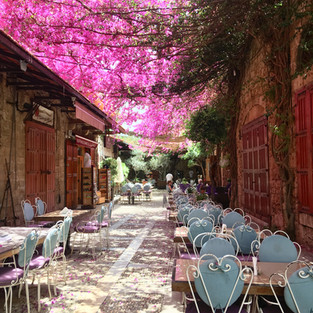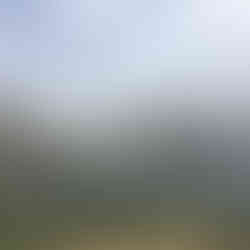A Week in Lebanon
- Cam & Lorraine
- Jul 30, 2019
- 7 min read
Lebanon is place that exceeded all of our expectations. In a short week we got a taste of its rich history, delightful food, and breathtaking landscapes. We both left feeling that Lebanon is ripe to become one of the next big tourist destinations. It offers beaches, coastal towns, well preserved historical monuments, endless mountains, and a vibrant capital in Beirut where you can reach most of the country on a day trip. Here is what we can highlight from our time there and some helpful tips:
Quick facts about Lebanon:
Lebanon has been held by many of the worlds great powers, including the Canaanites, Phoenicians, Greeks, Romans, Arabs, Byzantines, Ottomans, Crusaders, and France. In some historical places these influences are directly observable in the architectural ruins.
At the collapse of the Ottoman Empire after WW1 the region was given to France under a League of Nations mandate. Lebanon declared independence from this mandate in the 1940s.
Purple dye is said to have originated here with the Phoenicians.
The word 'Bible' derives from the town of Byblos in Lebanon and the word Lebanon appears over 70 times in the book. It is one of the oldest country names in history.
Byblos is disputed to be the oldest continually inhabited city in the world (some give this title to Jericho in Palestine).
The alphabet has origins from the Phoenicians. It is widely considered to be the first alphabet, and it was created in Byblos.
There are 450,000 registered Palestinian refugees living in 12 refugee camps since the Arab-Israeli wars that began in the 1950s. Some estimate these numbers to be even higher, and it remains to be a problem without solution.
Lebanon had a civil war between 1975-1990.
In 2017 58% of the population were Muslims, 36% were Christian, and 6% were Druze/other.
There are approximately 1M Syrian refugees residing in Lebanon.
This scratches the surface of the interesting facts that I will elaborate on when I have to time to sit down and summarize the regions great history.
When did we travel?
First week of June - Coming into a time where Beirut is lively and the beaches are popular.
What was the weather like?
Hot! +30 Celsius everyday and only slightly cooler in the mountains. No rain.
How did we arrive in Lebanon?
We arrived on a Fly Dubai flight direct from Dubai. One thing to keep in mind for Lebanon as you are planning your Middle East routes is that you cannot enter Lebanon with any evidence of having been to Israel. This includes land border stamps at their borders with Jordan and Egypt. Luckily, Israel is aware of this and doesn't stamp while coming through Tel Aviv, but confirm the land crossings as you're planning your itinerary. Entering Israel after Lebanon took some added time. We were sent to the "additional questions" corner and after an hour or two we were on our way. I don't think this would happen to everyone with the stamp but as far as borders go this was the strictest we've encountered.
How about the money?
Due to previous difficulty with inflation Lebanon decided to peg their currency (Lebanese Pound/Lira) with the US dollar. At ATMs and when making purchases you are presented with a choice of which currency you would like to use. Shops will use a standard rate of 1500 LL = $1USD and it won't fluctuate much from this on your credit card. When making payments you can even mix the two, and the airport/money exchanger stick to that conversion rate. Be sure to swap to USD before leaving as it will be difficult to change your LL once you leave the county. Below we will do the prices in $USD for this reason.
What did we do in Lebanon?
Day trip to Byblos
This coastal city lies about 30 minutes to an hour north of Beirut. It lays claim to being one of the worlds oldest continually inhabited cities dating back to their Canaanite/Phoenician origins (#2 to Jericho in the Palestine West Bank territory by most sources). The historic area contains well preserved ruins from Greece, Rome, Arab, and the Crusader period, including a large Crusader castle. The outdoor museum is quite large and includes plenty of information on artifacts/sights. The town itself is beautiful, surrounded by beaches to the north and south, and cobblestone streets with plenty of spots to eat and drink.
Cost: $30-$40 USD Uber each way + Museum entrance 8,000LL/$5 USD
Guided tour of Sidon, Tyre, and Maghdouche
We did a guided tour to reach these ancient cities which have well preserved remnants of a Crusader sea castle in Sidon, along with a Roman hippodrome and necropolis in Tyre (to name a few, check out the link below for the full details). The area in Maghdouche is believed to be where the Virgin Mary waited for Christ as he preached in Sidon.
Tour Company (Includes link to tour): Nakhal - If you can stomach the high cost it is well worth it. We always prefer to have an expert with us for deeply historic areas. Our guide was in the process of studying for an archaeology PHD and was both passionate and knowledgeable on the ruins/history. They also didn't cheap out on lunch, it was an absolute feast with appetizers, mains, dessert, and coffee.
Cost: $90 USD per person - Includes hotel pick up/drop off + lunch. Optional extras include purchases for the Sidon market or soap factory.
Drive to Aaquora, Baatara Gorge, Afqa, and Jaj
We hired one of our Uber drivers to take this trip, and were happy we did. If we didn't venture into the mountains we would have missed how beautiful they are. This was something we weren't aware of until we arrived and started chatting to people and looking through Instagram. Our highlights include the Aaquora lake pods, Baatara Gorge, Afqa waterfalls, and the Boutros Farhat sculptures in Jaj. Boutros was a very friendly man, and luckily our driver knew him so we are able to meet him and ask questions about his art. He offered us a signed book detailing all of his work which we still have in our packs! For the natural stops we will let the photos do the talking:
*You could do this one our your own with a rental, but would still need to contend with Beirut traffic and drivers (see below for why we opted for Uber).
Cost: $140-$180 USD for Uber driver + a small entrance fee for Baatara Gorge
Walking tour of Beirut
One of our first activities was a Beirut free walking tour. The tour gave us a nice overview of the city and its history. Remember, these are "free" but it is expected to give a donation. We found the tour to be very informative, and our guide gave her explanation of the civil war and Palestinian crisis.
Beirut arts, history, and architecture
Beirut is a city with plenty to do and learn. The effects of the civil war are still visible with decayed buildings standing beside those that are new a modern. There are areas built purposely to resemble Paris, and beautifully pay tribute to their French connection. For arts and history we went to the National Museum of Beirut, the Sursock Museum, and attempted to enter (closed) the Beit Beirut, a museum built into a ruined building that details the civil war.
What did we eat and drink?
As far as cuisine goes, Lebanon ranks among the top for places we've hit during our sabbatical. The Lebanese are proud of this culinary heritage but also offer international food for when you need to change things up.
For the most part we ate at our hotel breakfast buffet and small local eateries along the way. We didn't eat at many of the higher end restaurants in Beirut so we will more so detail what we ate as opposed to where.
Food
We focused on trying as much of the highlights as we could from the well known street foods like shwarma and falafel, desserts like baklava, and the appetizers/meals like hummus, kibbeh, fattoush, manakish, and tabbouleh to name a few.
Drinks
For drinks we always like to try the local coffee, wine, beer, or spirits wherever we go.
Lebanese Coffee - Lebanon has its own variation of coffee preparation similar to Turkish style.
Lebanese wine - Plenty of wine grown in the region and not too expensive
Arak - A white liquor similar to Zambuca. It can be quite strong. We had it once in a restaurant and once with our new friends. As always, homemade wins.
Lebanese Mexican beer - Beer, lemon juice, and salt
A couple places to highlight are Souk sixteen in Byblos for streetfood style and Kampai for Japanese in Beirut.
Where did we stay?
We stayed on points at the Four Points Sheraton La Verdun for the first five nights and then an Air-bnb closer to downtown in Gemmayzeh. La Verdun is relatively close to everything, but the area itself doesn't offer much to do. Gemmayzeh, is closer to the downtown center and houses much of the nightlife, restaurants, and cafes. It was our favourite district of Beirut, we found it to be lively and an easy base for exploring the rest of Beirut. It also makes for easy exploration north of Beirut as the highway is easily accessible from here.
How did we get around?
There is low cost transportation by bus, but it is not easy to navigate. We found a few blog posts that detailed how to make a trip down the coast to Tyre from Beirut but it seemed time consuming to us. We used Uber exclusively in Beirut and to take us for longer journeys. It charges USD and was about $4-6 per drive within Beirut itself. For longer drives to Byblos and back it was about $30-$40 each way.
One thing to note about the airport and taxi drivers in general. The taxi's seemed to be charging tourists a significant premium, but could likely be bargained down. For instance, our Uber cost $16USD to get from the airport to downtown, whereas the haggling taxi drivers that come into the arrivals area were asking $40.
Another popular way to navigate hard to reach places is to hire your Uber driver for a days worth of driving. Many of them are willing to do this off-app as they can cut out the portion that is going to Uber. It comes at a premium but the tours are also quite expensive. The nice thing is that they speak the language, can navigate the roads, and share their insight. Our driver was very kind and took us through the mountains showing us places we hadn't known about through our research. He even took us to his place to have dinner and arak with his family when the day was finished. It was one of the more memorable days of our sabbatical. For a full day of 8-10 hours depending on distance you should be somewhere in the ballpark of $140-$180USD for the car. Let us know and we can put you in touch with him!
Renting a car is not recommended for the average driver, but if you have experience driving in places that loosely follow the rules of the road you would probably be fine. Road conditions are pretty good, but Beirut does get some bad traffic.
Overall
Highly recommend getting here before tourism continues to expand. It's safe! There is something for everyone, and although difficult to do on a small budget, you'll be glad to spend you time and money here.


















































Comments